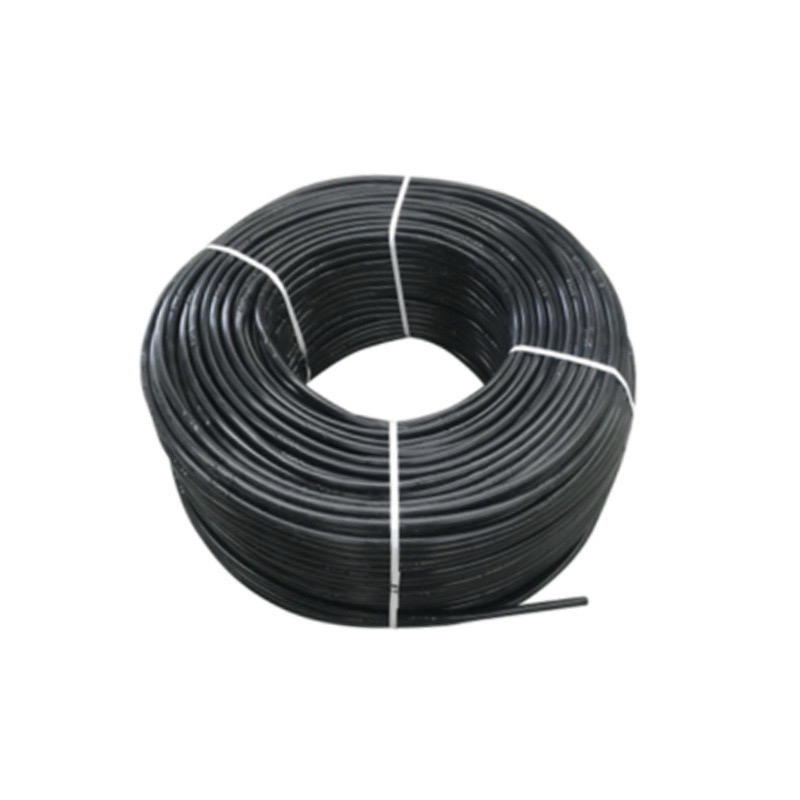How does the pipe resist clogging and ensure efficient water distribution to plants?
Drip irrigation systems utilize various methods to resist clogging and ensure efficient water distribution to plants.
Here are the key mechanisms by which they achieve this:
Emitters with Self-Cleaning Mechanisms: Drip irrigation pipes are equipped with emitters that have self-cleaning mechanisms. These mechanisms can include pressure-compensating technology, labyrinth flow paths, or self-flushing features. These designs help prevent clogging by minimizing the entry of debris or particles into the emitters and allowing for continuous water flow even if there are minor blockages.
Filtration Systems: Drip irrigation systems employ filtration systems to remove particles and debris from the water before it reaches the emitters. Filters, such as screen filters, disc filters, or media filters, are installed in the system to trap and remove contaminants. Regular maintenance of the filters, including cleaning or replacing the filter elements, ensures their effectiveness in preventing clogging.
Proper Water Source Management: Using clean water that is free from excessive sediment, organic matter, or other contaminants is crucial for preventing clogging in drip irrigation systems. Water sources should be properly managed and treated if necessary. Sedimentation basins, settling tanks, or pre-filtration systems can be employed to remove larger particles before the water enters the system.
System Flushing and Cleaning: Regular flushing and cleaning of the drip irrigation system help remove any accumulated sediment, particles, or organic matter that may lead to clogging. Flushing can be done by opening end caps or flush valves to allow a high flow of water through the system, effectively flushing out any potential blockages or buildup. Periodic cleaning of the pipes, including manual or chemical cleaning methods, may also be necessary to maintain optimal performance.
Proper System Design and Sizing: Designing the drip irrigation system with proper layout, pipe sizing, and emitter spacing is essential for efficient water distribution and minimizing clogging risks. Adequate pipe sizing ensures appropriate water flow velocity, 16mm Cylinder Dripper Pipe reducing the likelihood of sediment buildup. Proper emitter spacing and pressure regulation help ensure uniform water distribution to plants, avoiding overwatering or underwatering.
Regular Maintenance and Monitoring: Ongoing maintenance and monitoring of the drip irrigation system are crucial for identifying and addressing any potential issues that may lead to clogging. This includes inspecting emitters for blockages or damage, checking for leaks or damaged pipes, and promptly resolving any problems to ensure optimal water distribution.
By incorporating these strategies and practices, drip irrigation systems can resist clogging and efficiently deliver water to plants, promoting healthy growth, conserving water, and maximizing the effectiveness of the irrigation system.
What are the considerations for maintenance and cleaning of this type of drip irrigation pipe?
When it comes to the maintenance and cleaning of drip irrigation pipes, there are several considerations to keep in mind.
Here are some key points to consider:
Flushing the System: Regularly flush the drip irrigation system to remove any sediment, debris, or mineral deposits that may accumulate over time. Flushing helps prevent clogging and ensures proper water flow. To flush the system, open the end caps or flush valves and allow water to flow through the pipes for a period of time.
Filtration System: Install a filtration system to prevent debris from entering the drip irrigation pipes. Filters such as screen filters, disc filters, or media filters can be used to trap particles and prevent them from clogging the pipes and emitters. Regularly inspect and clean or replace the filter elements as recommended by the manufacturer.
Check for Leaks: Periodically inspect the drip irrigation pipes for leaks or damaged sections. Look for signs of water leakage or wet spots along the pipe length. Repair or replace any damaged sections promptly to prevent water wastage and maintain system efficiency.
Unclog Emitters: Check the emitters regularly to ensure they are delivering water properly. If any emitters are clogged, remove them from the tubing and clean them thoroughly. You can use a small needle or specialized emitter cleaning tools to remove any debris or mineral deposits.
Monitor Water Pressure: Regularly test and monitor the water pressure in the drip irrigation system. Ensure that it falls within the recommended range for optimal performance. High pressure can lead to emitter damage, while low pressure may result in inadequate water distribution.
System Winterization: If you live in an area with freezing temperatures, it’s important to winterize the drip irrigation system. This involves draining the water from the pipes to prevent freezing and potential damage. Follow the manufacturer’s instructions on how to properly winterize your specific system.
Pest Control: Monitor for pests like ants or insects that may cause damage to the drip irrigation system. Take appropriate measures to control pests and prevent them from affecting the pipes or emitters.
Regular Inspections: Conduct routine inspections of the entire system, including the pipes, emitters, connectors, and fittings. Look for any signs of wear, damage, or deterioration. Replace any worn-out or damaged components to maintain the system’s efficiency.
Follow Manufacturer’s Guidelines: Always refer to the manufacturer’s guidelines and recommendations for maintenance and cleaning specific to your drip irrigation system. Different systems may have unique requirements.
By following these maintenance practices, you can ensure that your drip irrigation system operates efficiently, providing optimal water distribution to your plants and minimizing the risk of clogging or other issues.

